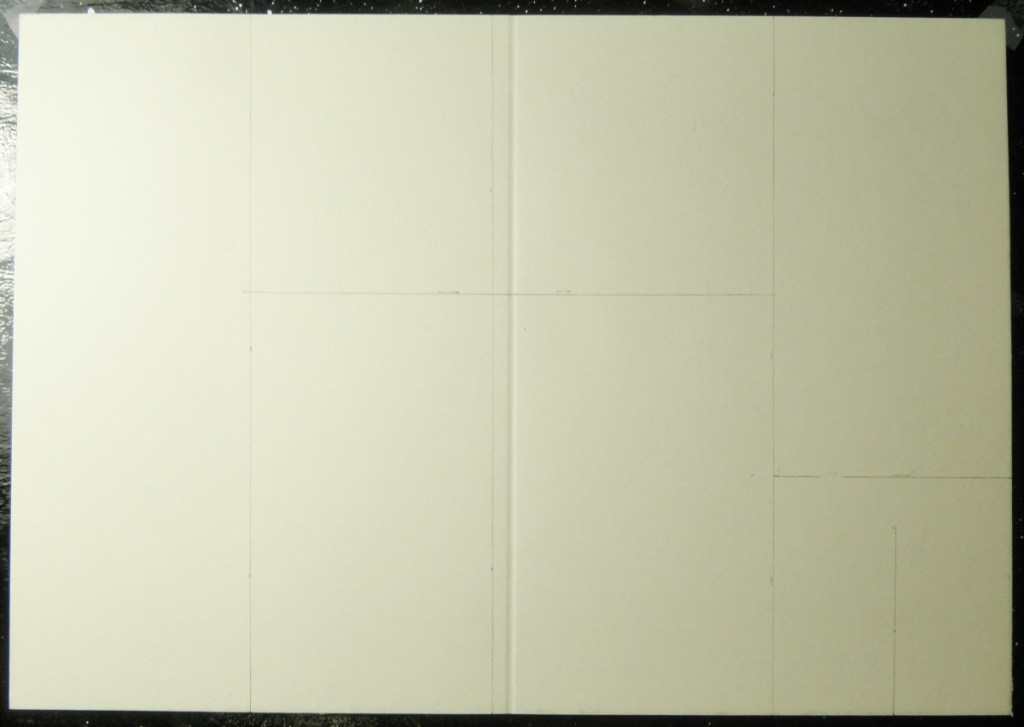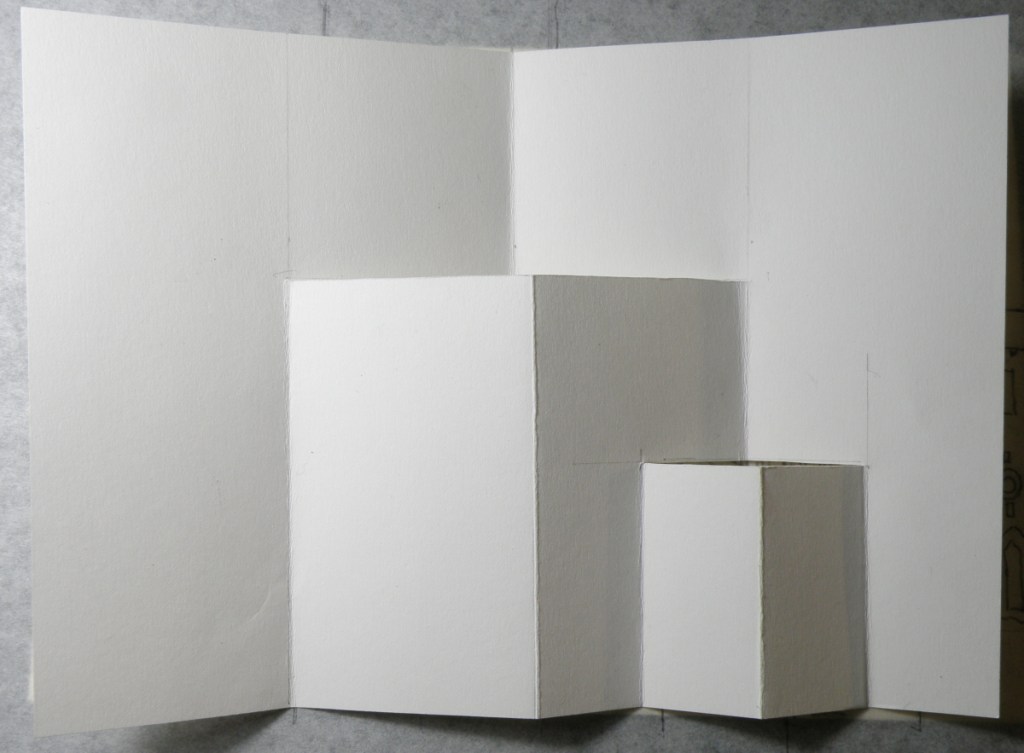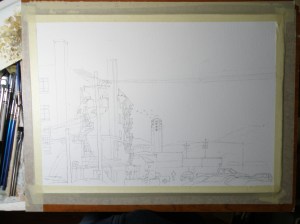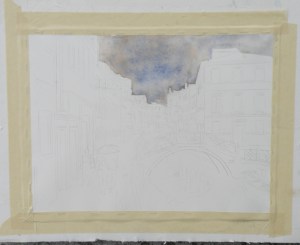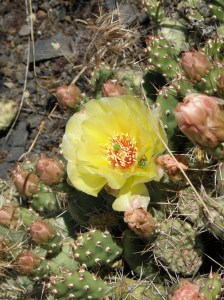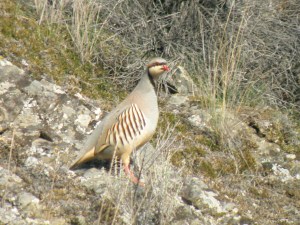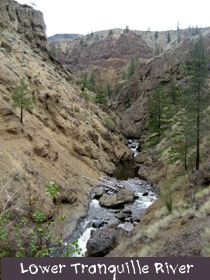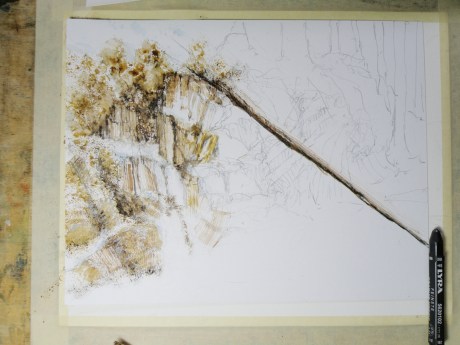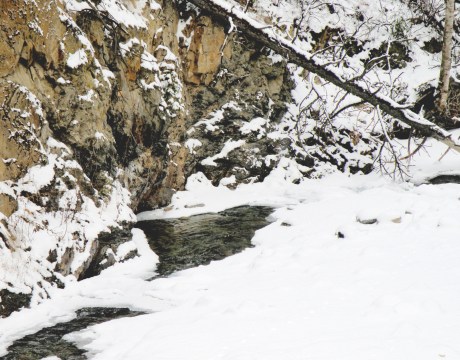Pop-Up Christmas Card Progression
December 13, 2021
Designing a hand-painted watercolour pop-up card for Christmas began in August because there were going to have to be seventeen of them in time for mailing.
Here is a look at the process and progress:
The Finnish composer (seven symphonies, including ‘Finlandia’) is memorialized in a tidy little one acre park in The Annex area of Toronto, Canada, nestled on four sides by its red brick house neighbourhood.
The Vancouver Sun’s long-serving investigative reporter and author, Douglas Todd, [https://vancouversun.com/author/douglastodd2/page/2], commissioned a watercolour of this familiar setting he and I knew well when living nearby while in a theatre company commune in the mid-1970s.
A striking memorial was donated by Toronto’s Finnish community in 1959 and the park–originally known as Kendal Square–was renamed Jean Sibelius Square Park. In 2010, the park was officially reopened after a major redesign equipped it with an extensive playground and enhanced outdoor skating rink.
Approaching this watercolour commission, it seemed most appropriate to laden it with a 1970s feel–visually allowing Doug and my memories of Sibelius Park to surface and suffuse the painting with an autumnal feel.
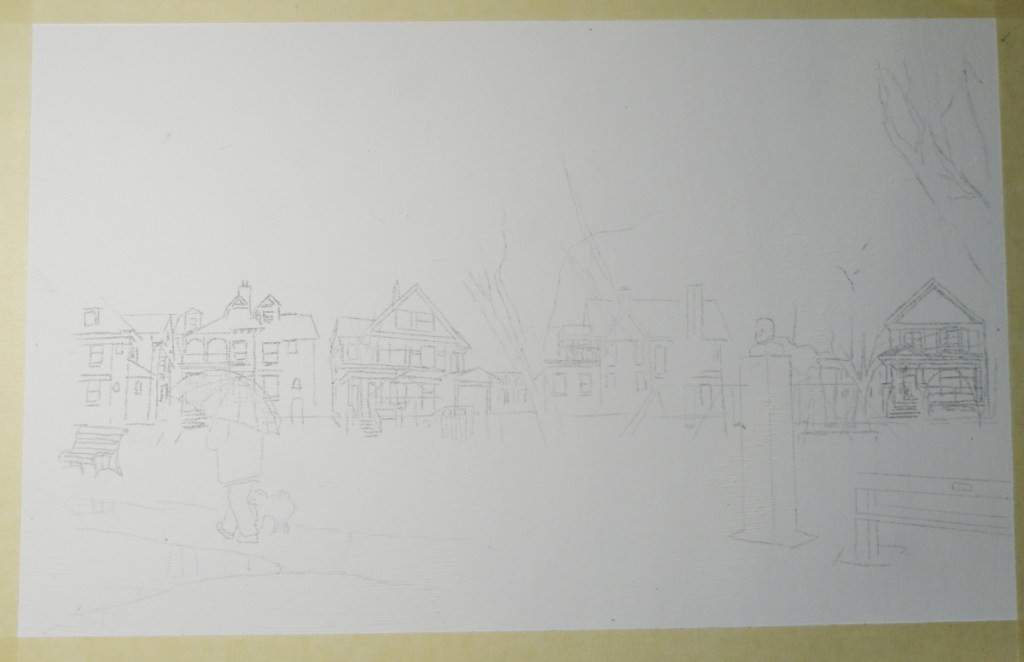
A decision has been made to sacrifice accuracy to the bringing up from deep memories a vision of what we both recall and felt about this little space–this oasis from the complicated goings-on within our nearby commune. And we both remembered it being nearly always empty of people, strewn with fallen leaves, lit by street lamps, smelling slightly of wood smoke from the chimneys of the surrounding substantial, Victorian brick homes of the established Annex community.

Therefore, the end result will disappoint anyone currently familiar with Jean Sibelius Square, and its revitalized, playground-dominated landscape, as well as those who may live around it. None of the actual homes will be depicted, rather homes springing from our memory of those homes are being brought to the surface.
Work in progress: ‘An ear-full of Waxwings’
February 2, 2018
As a child there was probably no bird I wished more to see than a Waxwing. In on-location photographs they just looked so exotic and intriguing–their colouration and little tufted crowns–the whole package was and is so appealing.
In those days we lived in Eastern N. America where Waxwings aren’t found and so it took many decades–after I’d moved to British Columbia–for my chance to encounter these birds. And it happened as I stood at our front picture window looking out at the Red Maple just beyond the glass–a tree which had nestled within it a deserted Robin’s nest.
Suddenly there appeared a large group of birds I’d never before seen, Cedar Waxwings, darting about the nest, examining it animatedly and calling to one another. I watched in fascination as they systematically began dismantling this Robin’s nest, their little bandit’s masks seeming very appropriate to their deciding to make someone else’s home theirs for the taking.
‘An Ear-full of Waxwings’ — work in progress — Saunders Waterford Hot Press Paper, 140 lb.
A grouping of these birds is known as ‘an ear-full’ almost certainly because they go about in bunches and are constantly chattering in a distinctive, rather conversational voice that is more insistent than melodic or song-like, yet charming even so.
…..downtown
October 31, 2015
Growing up in the 50s, we lived in a treed suburb of Rochester, New York (home of Eastman Kodak, Bausch and Lomb), but my father was a Pastor of a poor, post-WWII German refugee, inner city Church next to the Greyhound bus depot. My fascination with the grittier side of Rochester’s downtown must have come from how much more interesting it was compared with the staid predictability of houses and lawns and more houses and more lawns where we lived.
Sneaking away during the sermon, I’d scout out the alleyways of crumbling late 19th century brick tenements with their fascinating tangle of iron fire escapes doubling as fasteners for clotheslines, festooned with gingham tablecloths and sheets and jeans. Labyrinths of back-doored kitchens, cooks smoking, observing me in my too-small Sunday navy suit, an out-of-place kid trying to look nonchalant and part of the scene.
Luckily for me, Kamloops has that kind of feel. It is a railroad hub, cow ranchers beyond that–a labourer’s city–begun in 1812 as an outpost of the Hudson’s Bay Company, and has enough Western wear and roughness that some citizens feel our downtown still lacks class. By ‘class’ they mean there aren’t enough designer boutiques and specialty shops.
This is the start of a painting of downtown from behind one of the old hotels. . . .
The intention here is to make this a Christmasy, snowy subject, and its progress will be followed as the days go by.
venice challenge 2
August 12, 2015
The ongoing quest to interpret in watercolour a photo of Venice by Frank Dwyer of our local Kamloops Photo Arts Club has begun to take shape with a decision to take this 11.5cm x 16.5cm image and paint it as bigger–28cm x 25.5cm (11″ x 14″) –simply because a miniature of such a complex scene might prove less successful.
So here goes….
As much as the photo (entitled ‘The Blue Umbrella’) reveals damp pavement and the umbrella-holding couple, the sky isn’t quite as rainy-looking as perhaps it can be made to be for artistic interpretation purposes. So ultramarine blue and burnt sienna were applied to the whole of the sky as a wash.
Ultramarine Blue has a nice quality of being one of the ‘granulating’ pigments of watercolour. Its origins stem from the grinding of lapis lazuli, and received its name from the Latin ‘ultramarinus’ (meaning ‘beyond the sea’) .
So treasured and prized by the early painters, ground lapis (from Afghanistan, principally) was used by the painters of early icons as the garments for The Blessed Virgin. (When The Holy Mother is depicted, her robes are red.)
In 1826 a synthetic version was created which itself derives from a mineral compound, lazurite, and is today the most complex of all pigments. Being a ground mineral, ultramarine produces sediment that dries in a granular way when mixed with water.
To get this effect, however, the painter must apply ultramarine as a wash so the sediment can, in fact, separate and settle to create granulization. That is why, then, the sky dropped into the first stage of the painting appears granulated and gives a kind of antique look. If ultramarine is applied with only a bit of water, or straight from the tube (yikes), it will not granulate as such.
Some watercolourists are so avid about granulization, they buy a granulating medium from Daniel Smith, which, when mixed with most any watercolour paint, granulates. However, the natural granulating pigments are raw umber, burnt umber, raw sienna, and some brands of burnt sienna. That is because they come from the earth, and earth leaves sediment.
All of this material comes from a variety of sources, including http://janeblundellart.blogspot.com.au/ — (a very thorough and devoted watercolourist from Australia).
the tranquille creek gorge
May 16, 2015
THE SOUTHERN INTERIOR of British Columbia is a desert-like landscape, plunging steeply into geologically-unique valleys that include rattlesnakes, a ground-creeping variety of prickly pear cactus, sagebrush, and tumbleweed.
I ACCIDENTALLY DISCOVERED the local cacti by casually placing my hand on top of one in our backyard shortly after we’d moved to our current home.
OUR BACKYARD as such, is mostly mountain ridge, covered in these low-lying cacti, sagebrush, and outcropping of rock.
RUNNING UP AND DOWN OUR RIDGE are flocks of Chukar Partridges–a bird which belongs in ‘Roadrunner’ cartoons. Their name is derived from their ‘chuk-chuk-chuk-CHUK-CHUK-CHUKCHUKCHUKCHUK!!!’ call (who needs an alarm clock?). Below is a not-very-good photo of one (they are always on the run, making my camera skills not up to the task)….
NEARBY US is a very geologically-dramatic area called The Tranquille Creek Gorge.
PAINTING THIS TERRAIN ON LOCATION has to be done rather quickly (depending on the time of day), as temperatures can go up to 40C and the sun is relentless due to the lack of trees, and thus, shade….
COMING HERE FROM THE WET AND RAINY B. C. COAST, it has taken me years to come to fully appreciate the beauty of an arid area such as ours. But now that my eyes are open to the subtlety, I wouldn’t return to all that green for anything in the world. I’m happy in the depth of our browns (smile).
composition woes….
May 3, 2015
MY GREATEST CHALLENGE when painting anything is composition. For years I felt I was being a ‘purist’, insisting that I always paint on location, never in a studio setting. And once at the location, I convinced myself that if a tree was in that spot, then that was how it needed to be depicted.
IT WAS ALL DUE TO my tendency to early-on stop referring to the subject in front of me and become more and more involved in what was happening on paper, to the point where I may as well have not been on location at all. So in an effort at self-discipline, I decided that not only should I paint what things actually look like, I shouldn’t muck around with how and where ‘mother nature’ placed them.
THE SILLY THING WAS, I ended up choosing a composition by default because of course, I couldn’t paint everything my eyes saw in front of me. And more often than not, it was not a good composition. So now, not only do I go to some lengths to study the skill of creating an interesting arrangement, I realise it is the painter’s task to take what ‘mother nature’ provides and make art out of that. Fences do need to be repositioned, as do trees and hills and clouds.
SO NOW I MAKE thumbnail studies first on matt board before beginning anything . . .
THE OBJECTIVE is to provide a focal point, a visual way in towards it, then additional visual interest so the eye has more to discover by wandering beyond the subject itself. These thumbnails are exploring the use of a compositional figure ‘Z’ shape to lead the eye of the viewer.
beyond cool …..
April 19, 2015
Do yourself BIG FAVOUR and go visit . . .
ART LESSONS FOR BEN
http://benjamindraws.com/caricature-3/
Painting progression 1. . . ‘Cows’
April 11, 2015
THE DEWDROP VALLEY is a local site and part of a much larger area near Tranquille River and the Tranquille River Gorge. In essence, the Dewdrop is really rocky, hilly, grass-and-tree- covered pasture for cows and cattle during the Spring and Summer months. The Kamloops Thompson Nicola Shuswap Region is no-nonsense cowboy rancher country, complete with serious Rodeos and horse and rider cattle round-ups in the Autumn.
This is the first of recording daily progress towards completing a watercolour depicting a typical scene in The Dewdrop Valley . . . .
ON DISPLAY are a fine collection of tortured brushes. Some are from dollar stores or second hand bargain stores, and as soon as they get into the spare bedroom cum studio they’re cut up with scissors. None of them cost more than $2, and who knows what they’re made of–Moose? Sasquatch hair, perhaps. Each, however, is priceless.
Painting progression 2…. ‘Jamieson Creek Thaw’
April 3, 2015
Painting progression 1…. ‘Jamieson Creek Thaw’
April 2, 2015
JAMIESON CREEK is about a 15 minute drive from our home, along a dirt logging road. The Kamloops, British Columbia, region is a geologist’s dream come true, featuring some of the oldest mountains in Canada. As a student of watercolour, I am fascinated by stone and rock, particularly because it is so challenging as a subject.
This is Jamieson Creek, taken four years ago around February, early March….
And here is my initial drawing of the subject…..
As you can already see, photography is not my gift (which is why I paint, lol)–so forgive the darkness. It was taken, pre-dawn in the spare room which serves as a studio.
